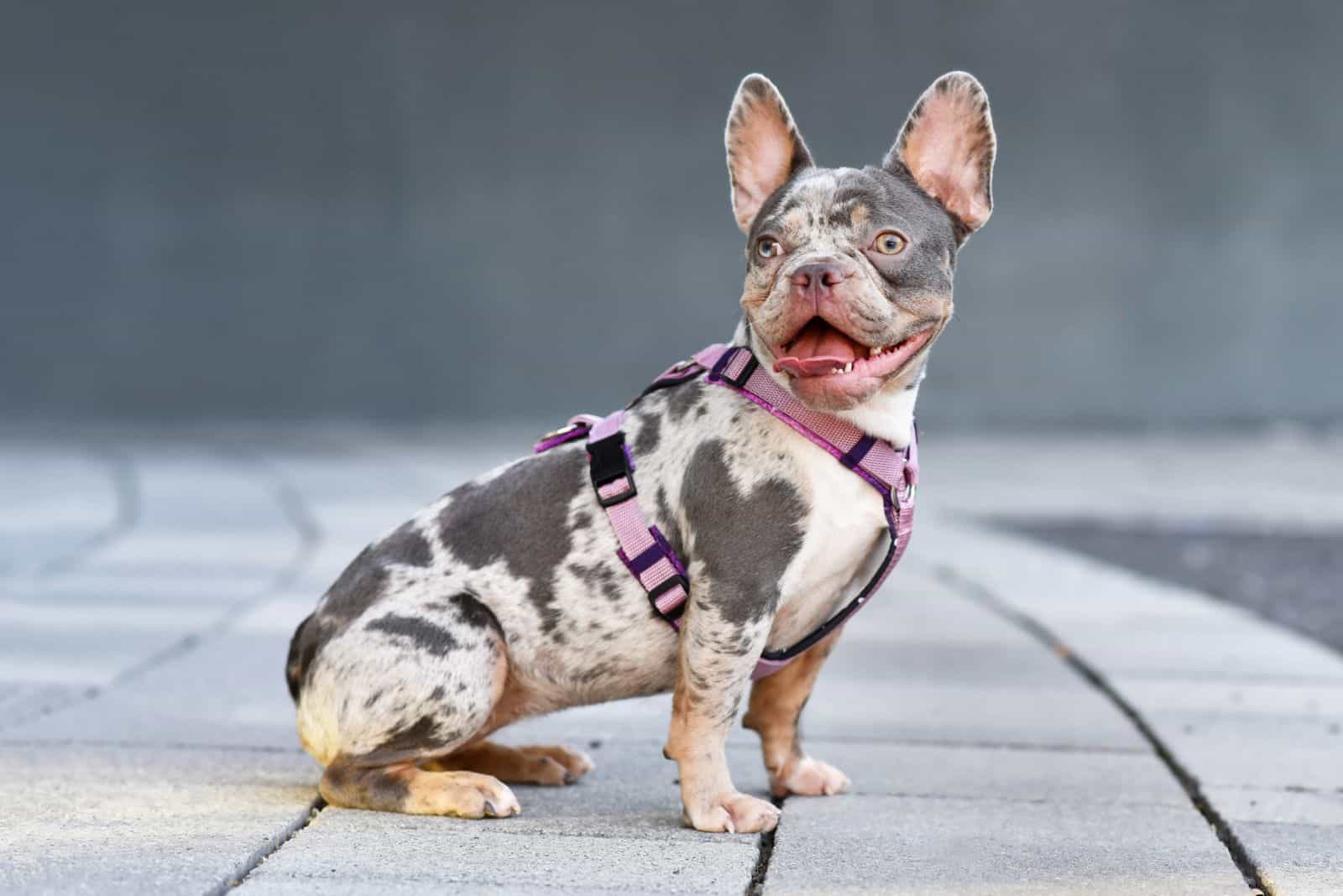French Bulldog puppies can come in a wide variety of colors, though the rarest variant has to be the tan French Bulldog, but why exactly is that the case?
Well, a tan French Bulldog isn’t an AKC (American Kennel Club) recognized color, so breeders didn’t really bother trying to cultivate a more common presence of said color.
Most of the time when it happens, it does so on accident, and it’s an incredibly rare occurrence to get a fully tan French Bully in general, hence the scarcity.
You may get slightly tan variants of other colors, but that’s about as common as it gets.
That said, it’s definitely not an ugly one. On the contrary, it’s particularly exquisite, it’s just that said inherent rarity doesn’t fit show dog criteria as judges need to judge based on something a good majority of the breed’s members can exhibit.
If they didn’t, then it’d be a battle of who can spend the most money on getting one rather than who can raise the best French Bully regardless of coat color.
Though, because of these circumstances, even though the mutation is rare, the fact that it’s not AKC recognized means that you can get a tan colored French Bully at reasonable prices as compared to some others.
This is all due to a lot of prestige coming from being show dog viable.
However, even if you can’t get one, there are still plenty of other color options to explore, so read on to find out more about the alternatives as well as more about the breed itself and the answers to the many questions French Bully owners ask online.
The French Bulldog: A Brief History
Before we delve in any further, it’s important to get acquainted with the Frenchie’s brief, but rich history of how the breed came to be.
The first record of Bulldogs in general comes from the start of the 19th century where they were bred for bull baiting, one of a handful of blood sports popular at the time, thankfully largely prohibited in today’s time.
This is where the name Bulldog comes from, however, French Bulldogs weren’t used for that, they were bred to be pets more so than dogs used for these violent sports.
And, contrary to the name, the first ones were actually bred in Britain, though were called Toy Bulldogs at the time.
It wasn’t until the middle of the 19th century where many of the English workers moved out to Normandy, France to try and find a better life, that the breed appeared.
They brought many dog breeds along with them, one of them being the Toy Bulldogs in question.
The dogs have since gained popularity and, by the middle of the 19th century, somewhere in the late 1850s, the majority of their owners and audience were in France.
Over the course of time, it would be considered its own special breed and highly regarded as a fashion accessory of some sort, a must have ‘item’.
The next decade or so was a blur of missing records, but we do know that the breed was introduced to the United States around the year 1885 in its present state, evolving here and there as the breed got further modernized.
And then, in the year 1898, the breed was officially recognized by the American Kennel Club and logged as it was today, with set breed standards.
Though, experiments still continued to this day in trying to find new coat colors and improving on the breed as a whole.
The Tan French Bulldog And 20 Other French Bully Colors
But what about colors then? Well, the French Bulldog has a wide variety of color options, however, not all of them are AKC recognized and the ones that aren’t won’t be able to participate in any official AKC conformation shows.
A deal breaker for a lot of folks out there, but not for all, as some value the dog more than they do the accolades he can earn them.
With that in mind, I’ve split the colors into standard and non standard ones so you can see the full spectrum of this breed’s lovely coat hues, but in a way where you’ll know which ones still make the Frenchie a valid show dog.
Standard French Bulldog Colors
Here are the standard color options:
- Fawn French Bulldogs
- Fawn & White French Bulldogs
- Fawn Brindle & White French Bulldogs
- Brindle French Bulldogs
- Brindle & White French Bulldogs
- Cream French Bulldogs
- White French Bulldogs
- White & Brindle French Bulldogs
- White & Fawn French Bulldogs
Fawn French Bulldogs
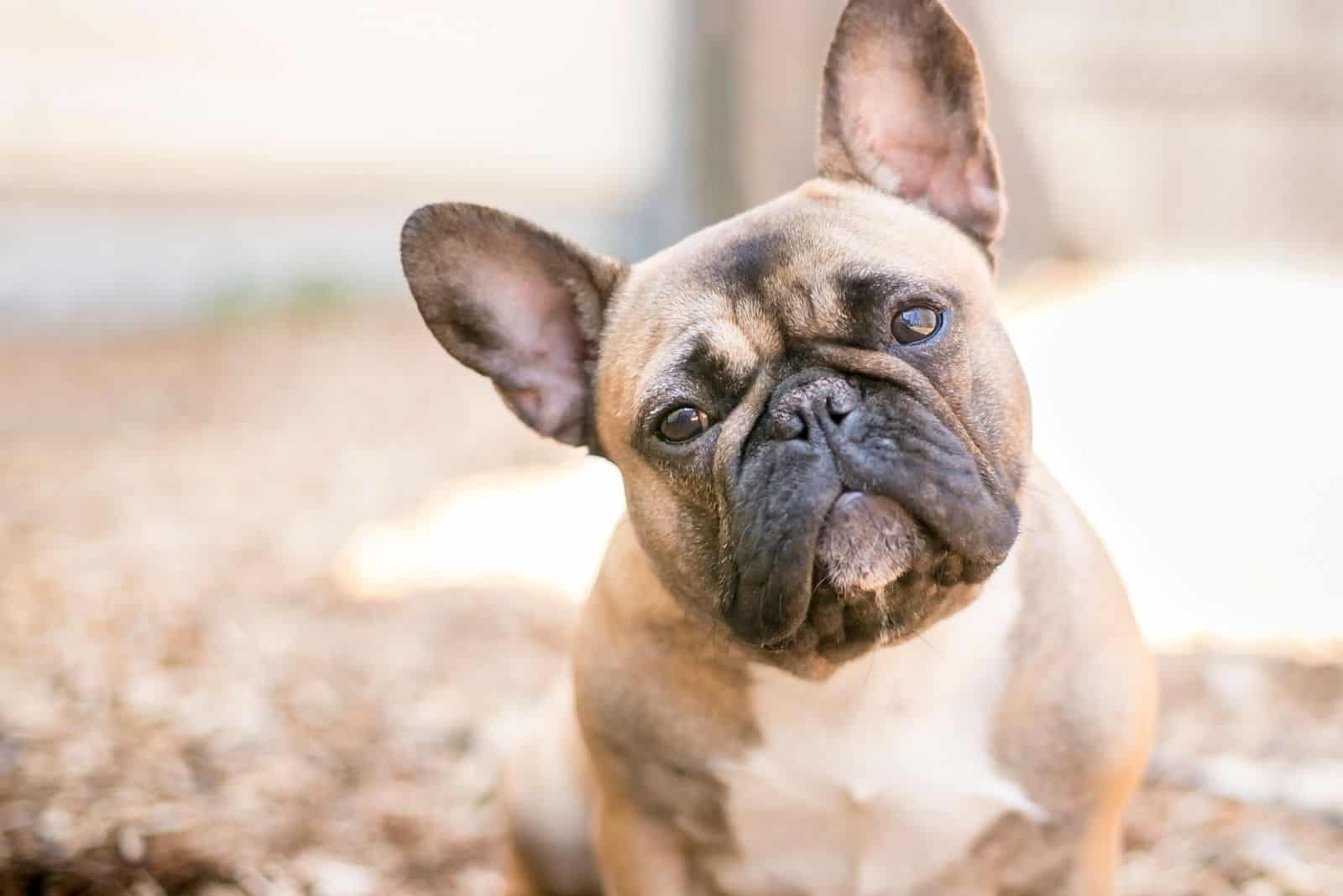
These are what are considered the most common and standard color for the French Bulldog, the representative one, if you will.
The color, in simpler terms, would be more akin to a tan brown one, or even blue-ish or beige.
They may even have different patterns.
The black mask is standard for his face and it stays with most of his colors.
The brindle also gets a somewhat tiger-esque pattern on itself.
And he may have white markings and black shadings as other potential patterns.
White French Bulldogs
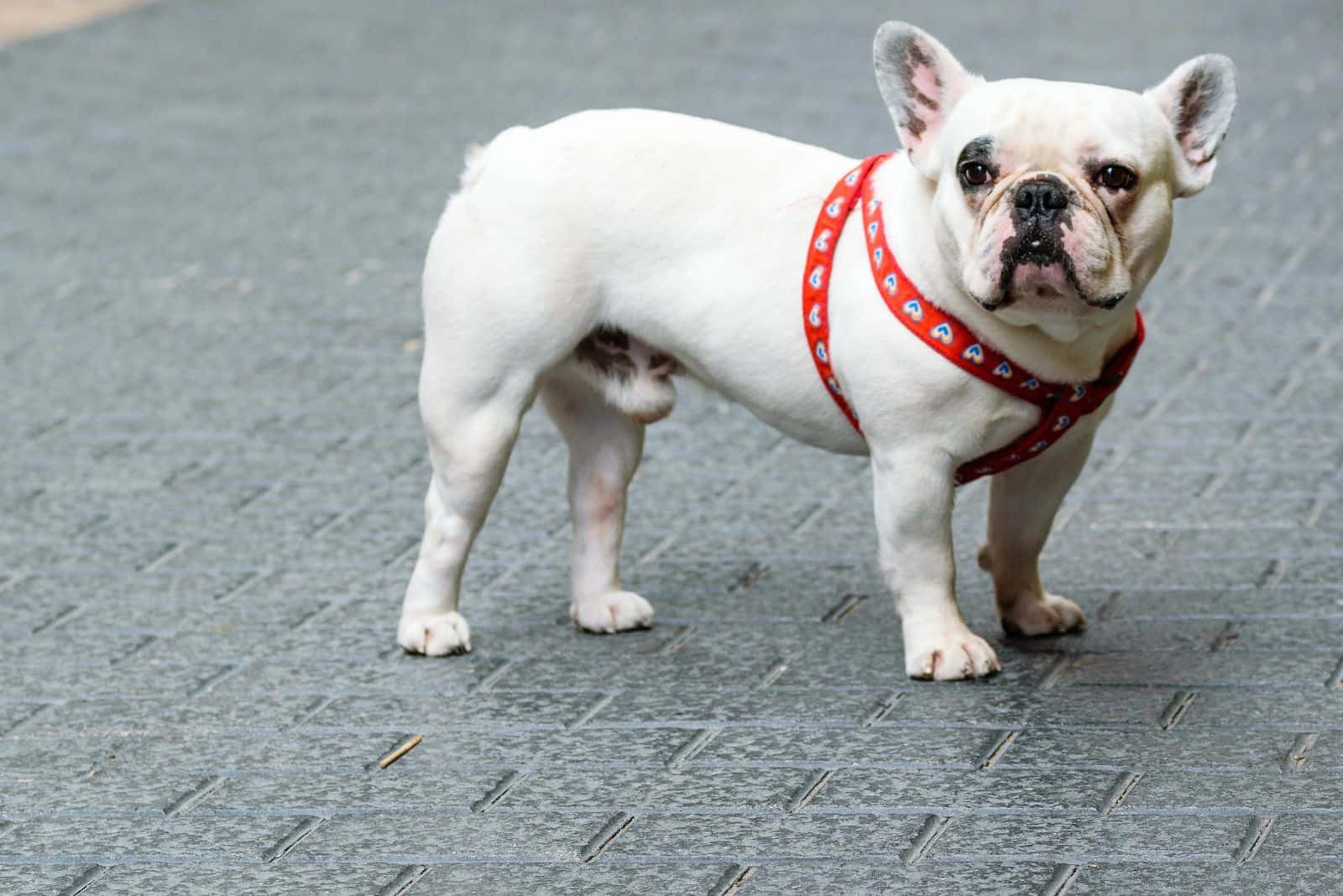
White Frenchies are rarer than their fawn counterparts and are often tied to health problems like potential deafness, and the detriments that come with albinism, among other problems.
One of the more common ones are increased chances of health issues involving their eyesight or skin, making them more prone to infection, or, in the eye’s case, loss of vision.
Though, despite all of this, the color is still recognized as a standard one and is even preferred by a lot of pet owners out there.
The markings stay relatively the same, including the black mask and the brindle, as shown in the ‘standard colors’ list.
If you’re looking for a particularly albino Frenchie, that’s even more rare, as both parents would need to carry the recessive gene and then hope one of the pups in the litter ends up with albinism which is a 25% chance at best.
Though, even then, I’d suggest trying to avoid it as it’ll only end up putting the dog through unnecessary suffering, something he already has enough of due to his brachycephalic nature.
Cream French Bulldogs
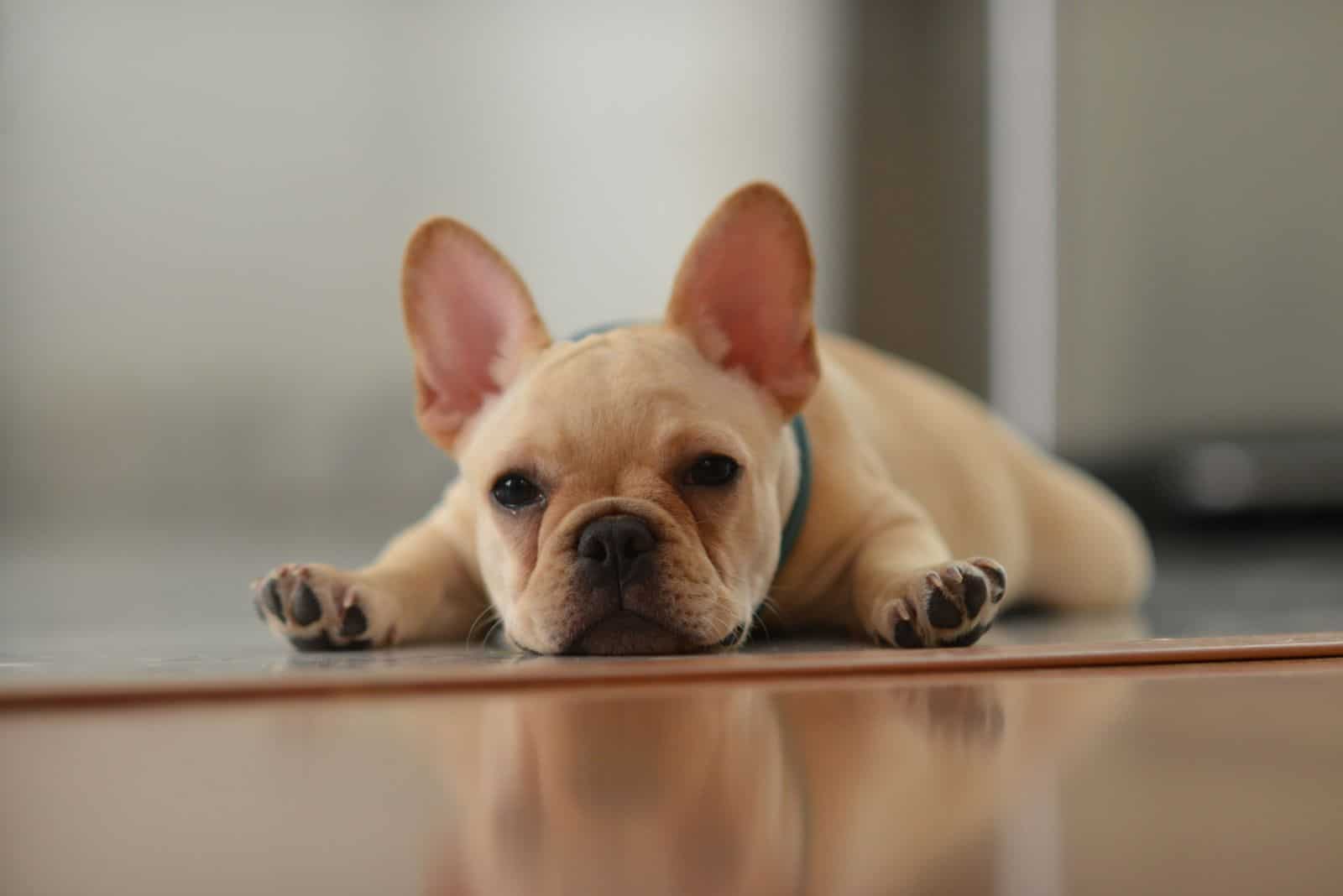
It’s a color that had spawned from the fawn Frenchies, but one that’s highly appreciated nowadays.
Cream is yet another pretty common one among French Bulldogs, like a sort of dirty white color, the color of a latte in a sense.
Despite the idea of a dirty white color, the pattern is relatively smooth and even, without any traces of any particular markings.
The color does come with the black pigmented mask much like every other version does too, but that’s about it.
Brindle French Bulldogs
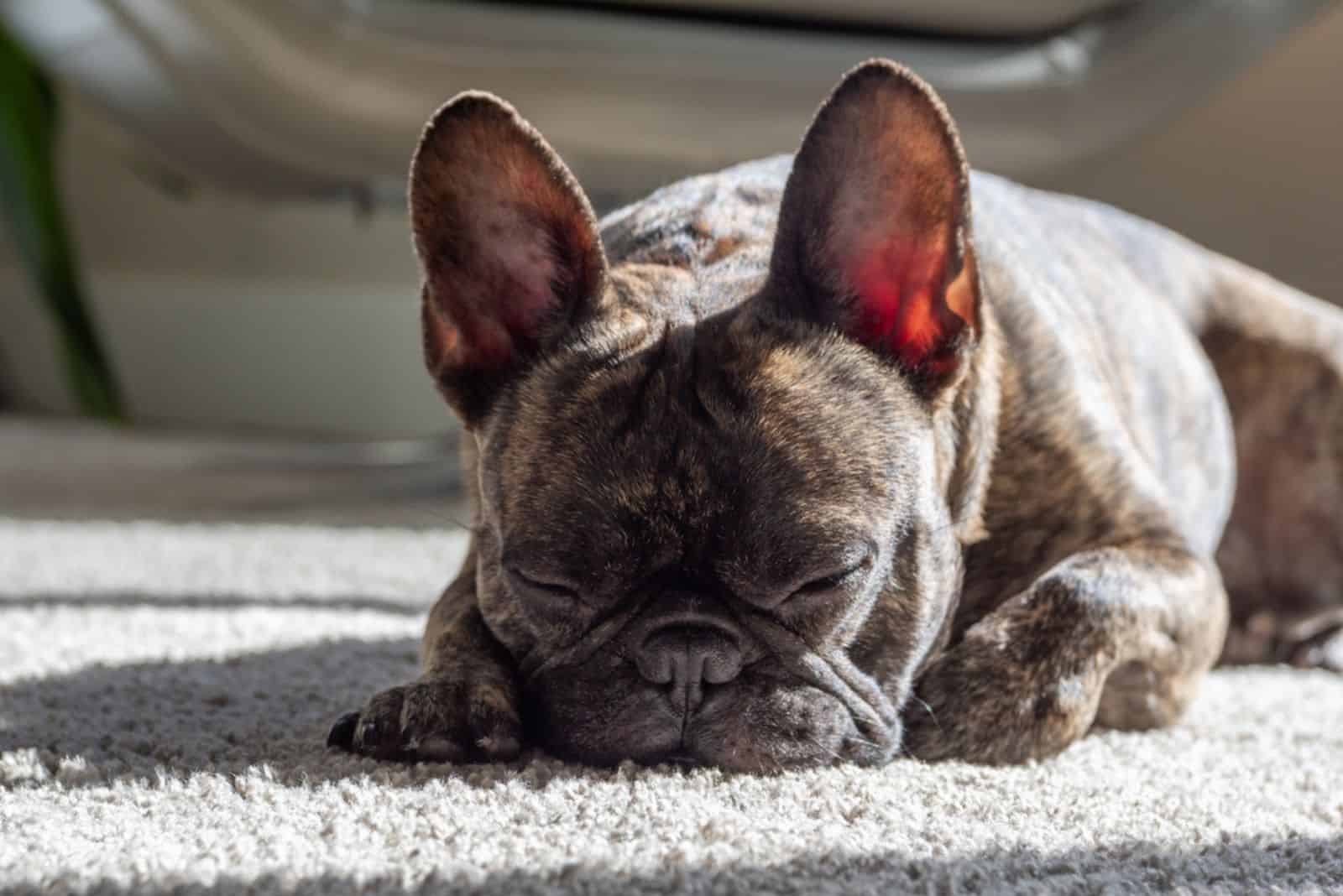
While not a color on its own, it’s a possible pattern option on the AKC recognized colors.
It’s a variation on possible colors, one where the dog ends up getting a sort of tiger-like pattern on his fur.
It’s more common in darker fur as it’s a recessive gene that darker furred doggos have, but, as seen in the above list, can manifest itself in lighter colors too.
The brindle color varies based on intensity and can show up as barely visible to the point where it almost becomes the dominant color.
The stripe colors in a brindle coated breed are almost always black.
Brindle Piebald French Bulldogs
A brindle piebald coat pattern is one where the dog’s fur shows larger dark spots on his body while having a primarily white or light colored coat.
The most commonly affected areas of the dog are ones closer to the top, be it his head or along his back, and around the neck.
It too can vary in intensity, but even the smallest trace ends up being considered a brindle piebald.
Non-Standard French Bulldog Colors
While the pool of standard colors is relatively big, the non-standard pool is equally as large, if not more, but we’ll focus on some of the more common uncommon colors.-
Here are the most popular ones that aren’t recognized by the AKC:
- Tan French Bulldogs
- Merle French Bulldogs
- Blue French Bulldogs
- Sable French Bulldogs
- Isabella French Bulldogs
- Lilac French Bulldogs
- Chocolate French Bulldogs
- Blue Sable French Bulldogs
- Blue Pied French Bulldogs
- Blue Brindle French Bulldogs
- Blue Fawn French Bulldogs
- Red Fawn French Bulldogs
Tan French Bulldogs
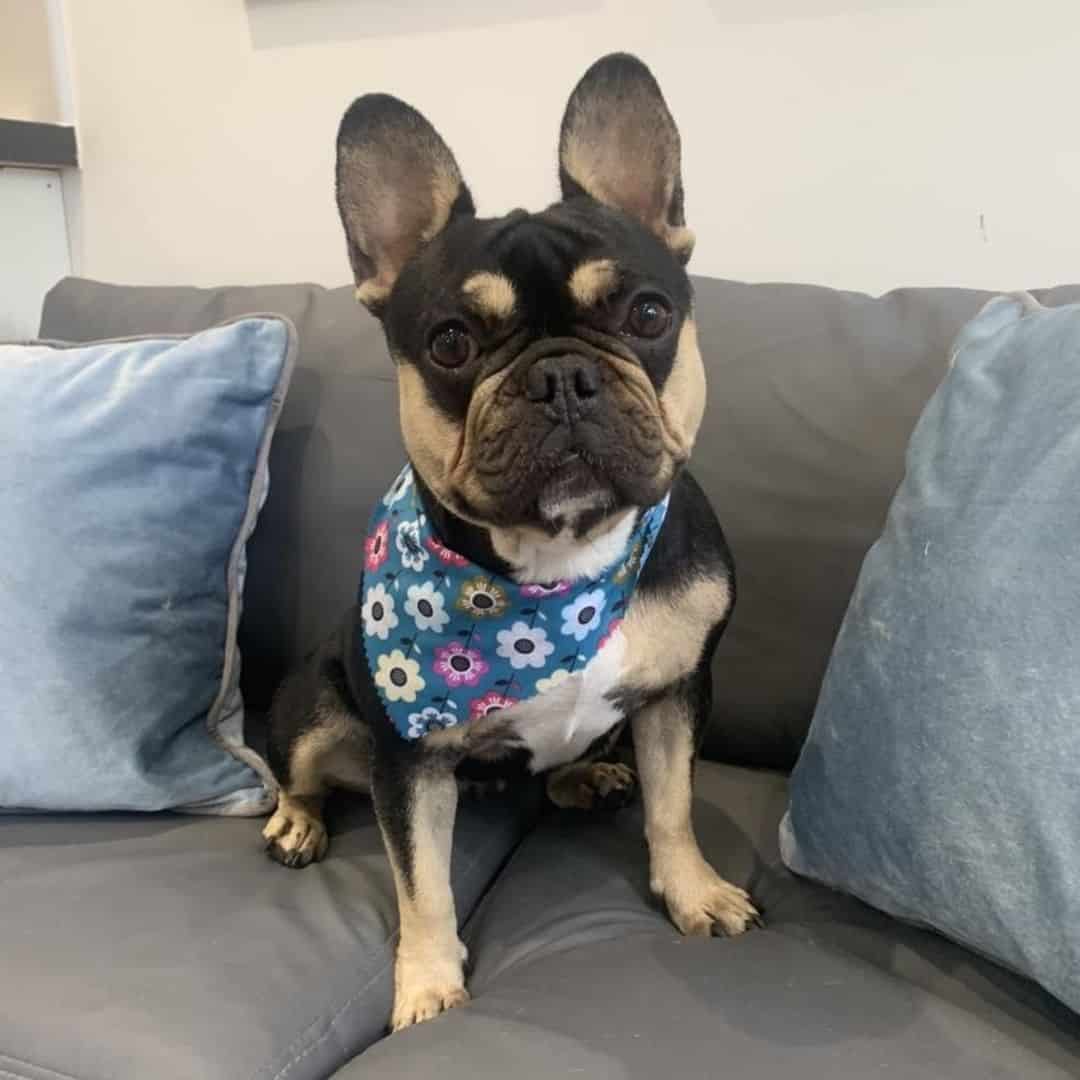
Speak of the devil, the main color of the article is in the non-standard ones, and to no surprise as a fully tan French Bulldog puppy is incredibly rare to find as tan Frenchies will primarily appear mixed in with another color.
Fawn is generally considered to be the only variation of this one that’s acceptable while the other, more common variants of it end up being lilac tan Frenchie puppies, choco and tan, and blue and tan French Bulldogs.
If you ever wind up on one that’s fully tan though, know that it’ll cost you a pretty penny, even if he isn’t approved to appear in AKC sanctioned dog shows as the rarity itself is going to jack the price up.
Merle French Bulldogs
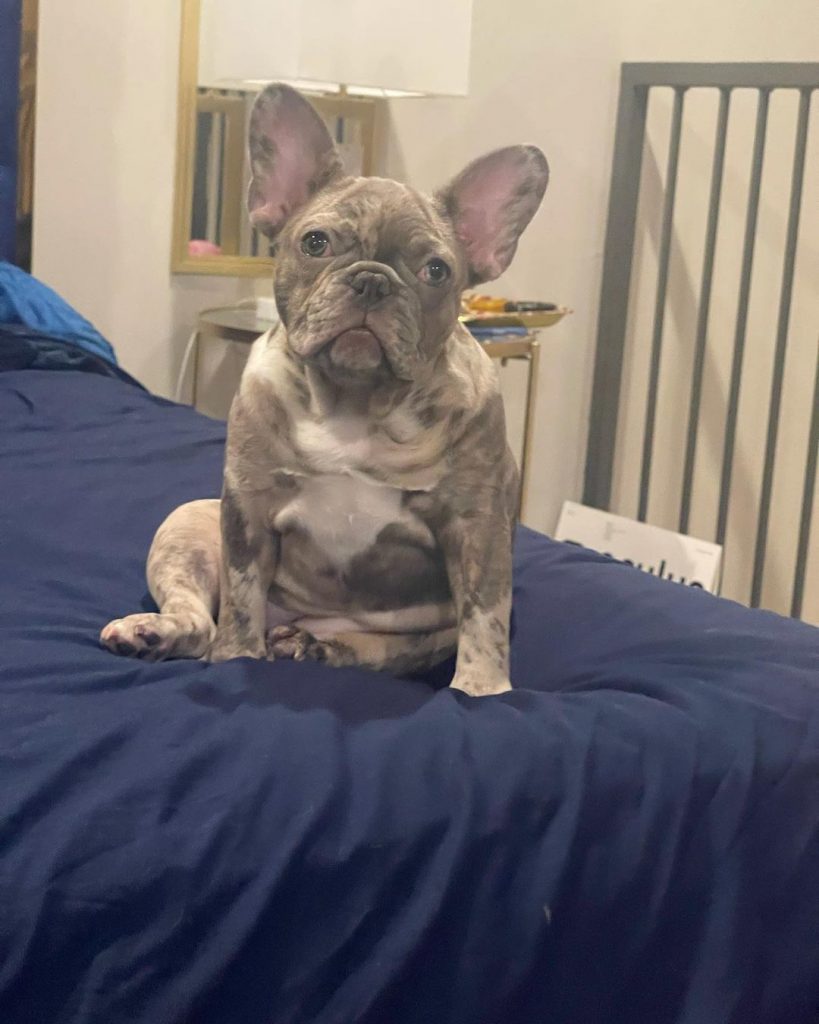
While the merle fur pattern may make it seem like your dog has crawled through an oil pipe, it does have this odd beauty to it, like a diamond in the rough.
It’ll obviously depend from person to person, but most people tend to fight the pale fur color dotted about with various darker, but faded patches pretty intriguing, and I’m most certainly one of them.
While not a show dog, this coat variant still ends up costing more than a standard colored one would among French Bulldog breeders.
However, much like with the albino coloration, the merle is a dangerous one as it’s often an indicator that the dog in question is more predisposed to specific health issues as it’s not a purebred.
RELATED: Merle French Bulldog: Facts About The Mottled Charmer
Blue French Bulldogs
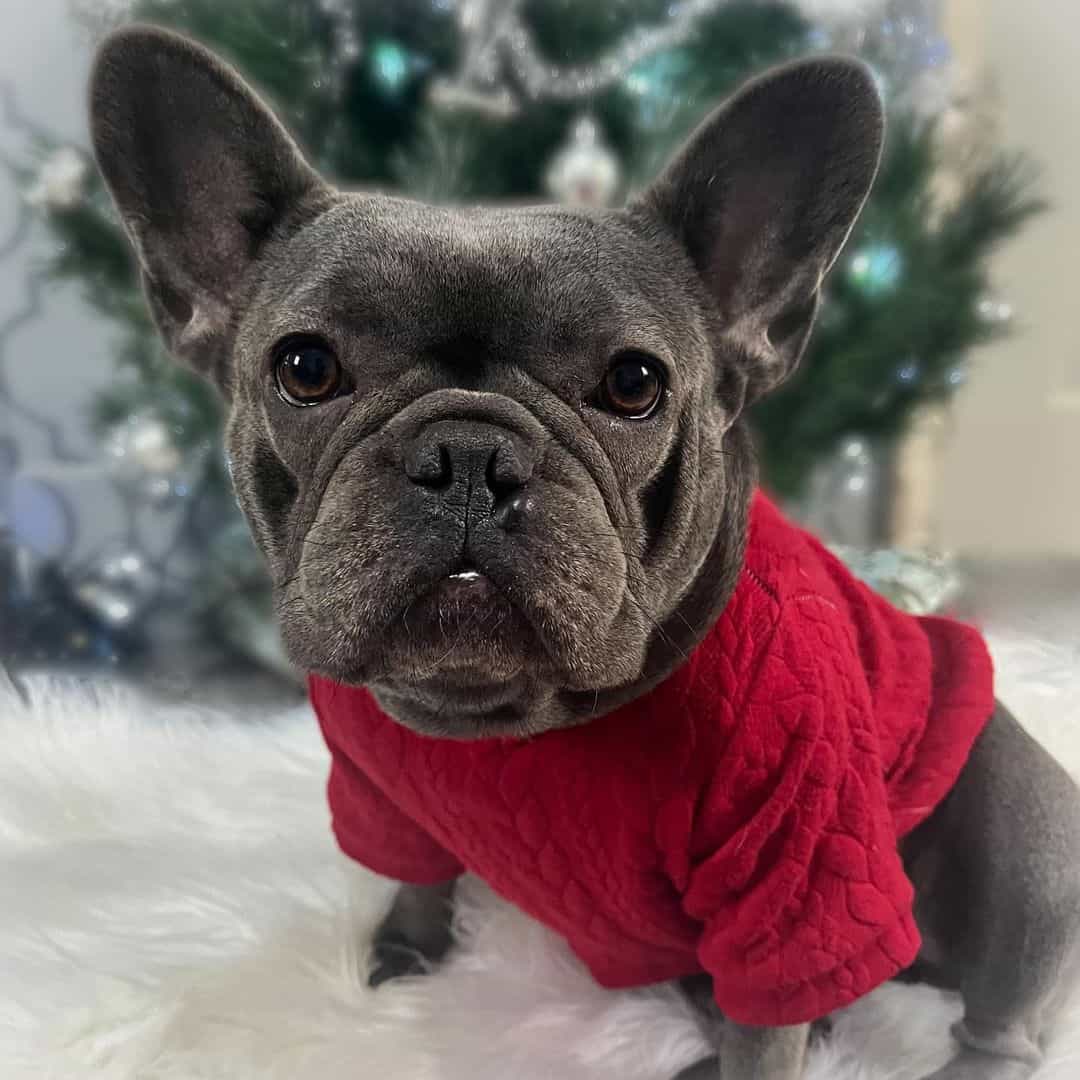
Blue Frenchies are another relatively rare fur color, though it’s not a literal sky blue.
It’s more of a mix of a lighter gray with hints of ‘blue’ due to coloration differences thanks to a recessive gene.
Some of them may even end up darker, going to a near full black, but those are extremely rare.
Once again though, due to it being a non-standard coat coloring option, it does come with an increased likelihood of health problems because of it as it’s not considered a purebred dog.
However, even with that increased risk, the price still ends up being higher simply for being ‘unique’, a practice that should be abolished as it only ends up hurting innocent pups for the sake of cashing in on a person’s desire to get something unique.
Sable French Bulldog
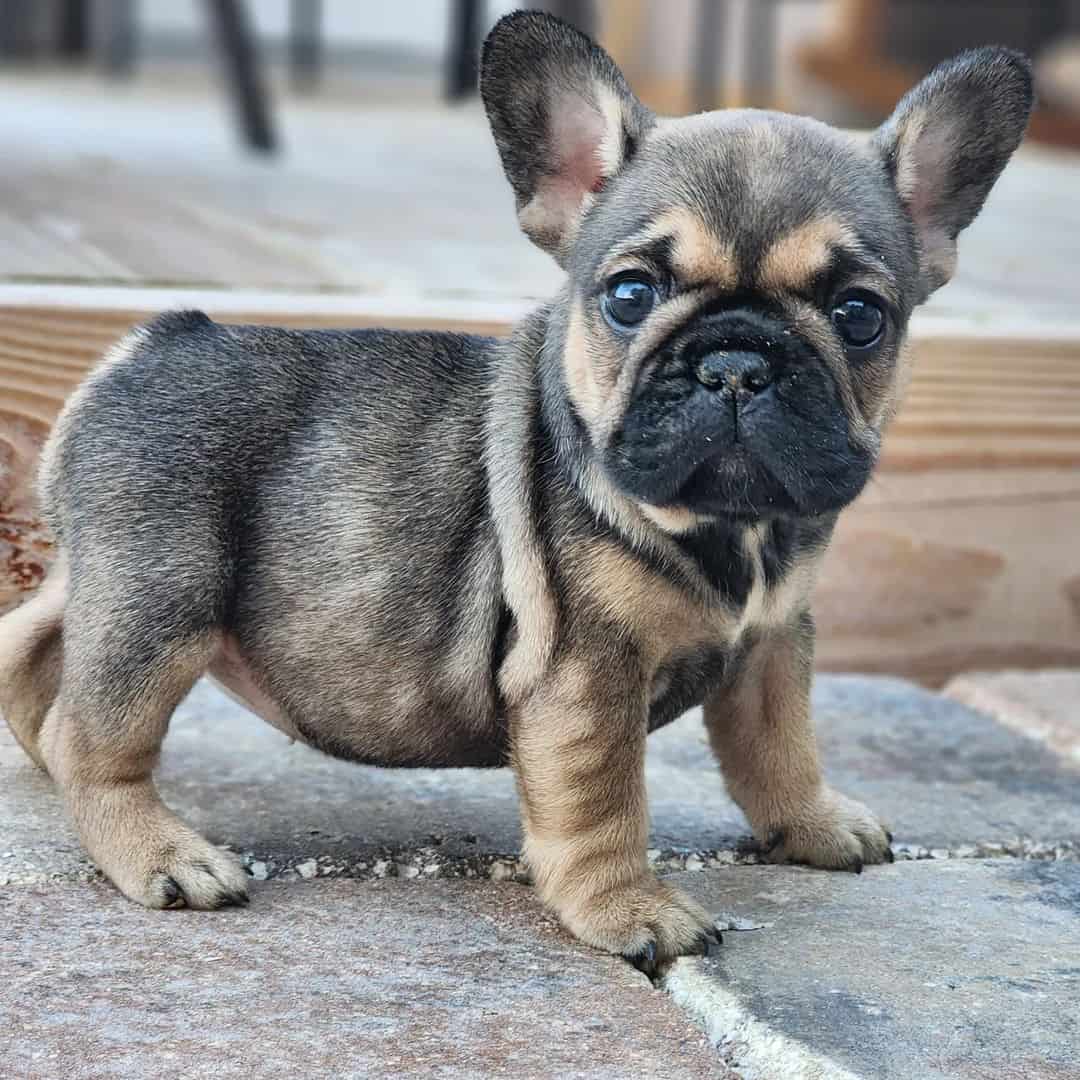
The sable French Bulldog normally occurs on fawn frenchies.
It’s a barely noticeable difference, but it manifests as a number of black hairs showing up at random in the fur that will produce odd patterns and color gradients, making specific tan points compared to the standard fur color.
The color is relatively popular too, so people always flock to get one, which means that their cost is, once again, higher than regular Frenchies for people who don’t pursue dog show canines.
Isabella French Bulldogs
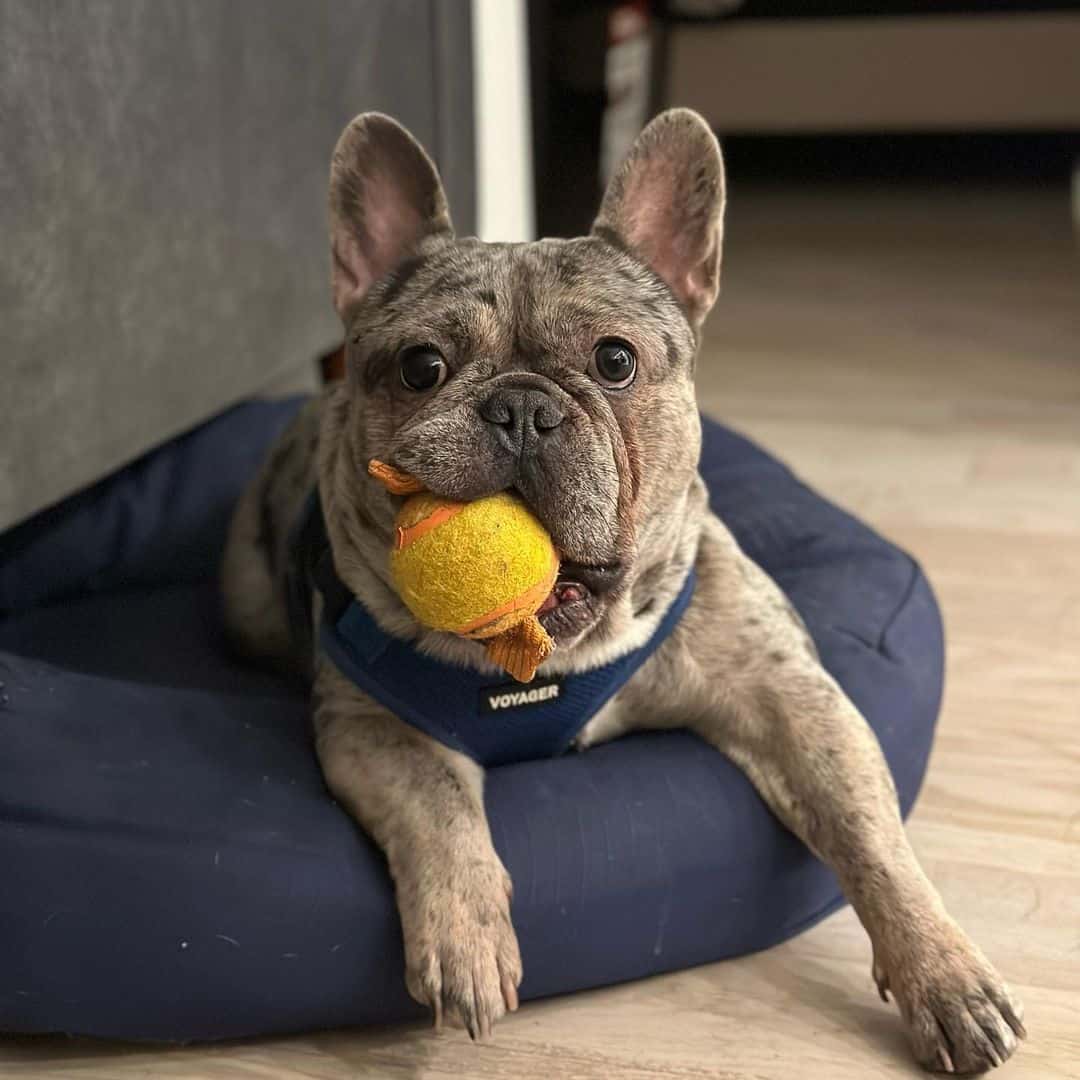
A color whose rarity rivals that of the tan French Bulldogs and it’s a pretty breathtaking coloration too.
It’s a mix of a liver color with some hints of blue to it, making it appear absolutely divine.
This stunning color pattern also makes it one of the most, if not the most expensive French Bulldog color options with average prices reaching well over $8000, if not more.
RELATED: Isabella French Bulldog: Earth’s Rarest Jewel?
Lilac French Bulldogs
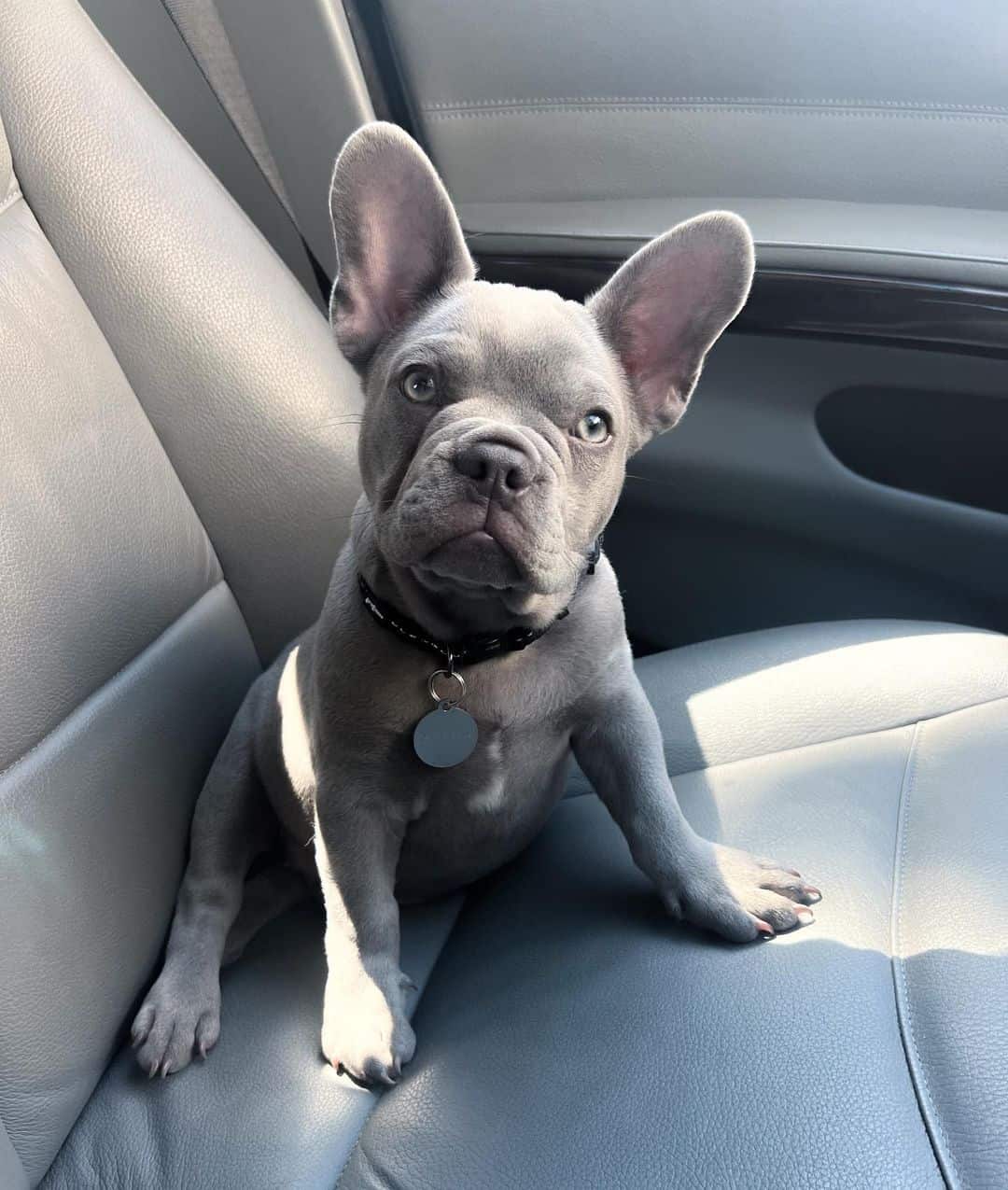
Yet another uncommon color, one that’s incredibly rare that’s primarily gray with hints of white which give off the illusion of a pleasant lilac color.
It, paired with the lighter colored, somewhat reddish or pinkish nose and the area around the mouth, make for a great combo.
That said, the process in which they’re obtained is relatively dubious as they’re generally created through C-sections and the like instead of through natural birth to get this specific color.
While it’s not as expensive as some of the other options on this list, they are highly sought after which makes the practice all the worse.
Not to mention that it may come with certain health detriments as well which only further harm the dog.
Chocolate French Bulldogs
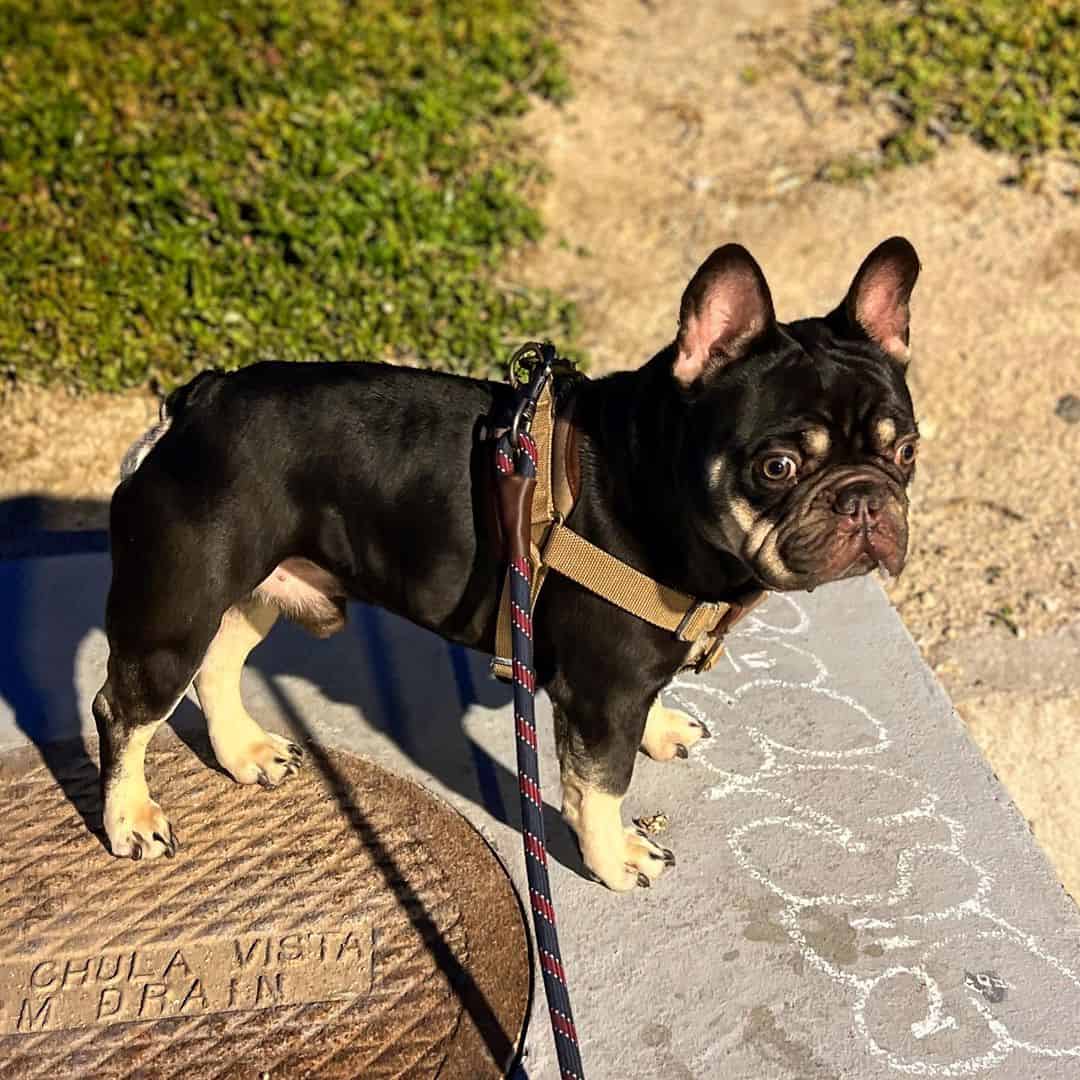
To no surprise, a choco Frenchie has a distinct brownish hue which can appear either pale or fully dark brown.
It’s a very pretty color that occurs due to a recessive gene, as most of these do.
Though, because of that, it’s pretty rare as both parents would need to have it in their bloodline, and even then it’s a gamble on whether or not the colored Frenchie ends up with that specific one.
Blue Sable French Bulldogs
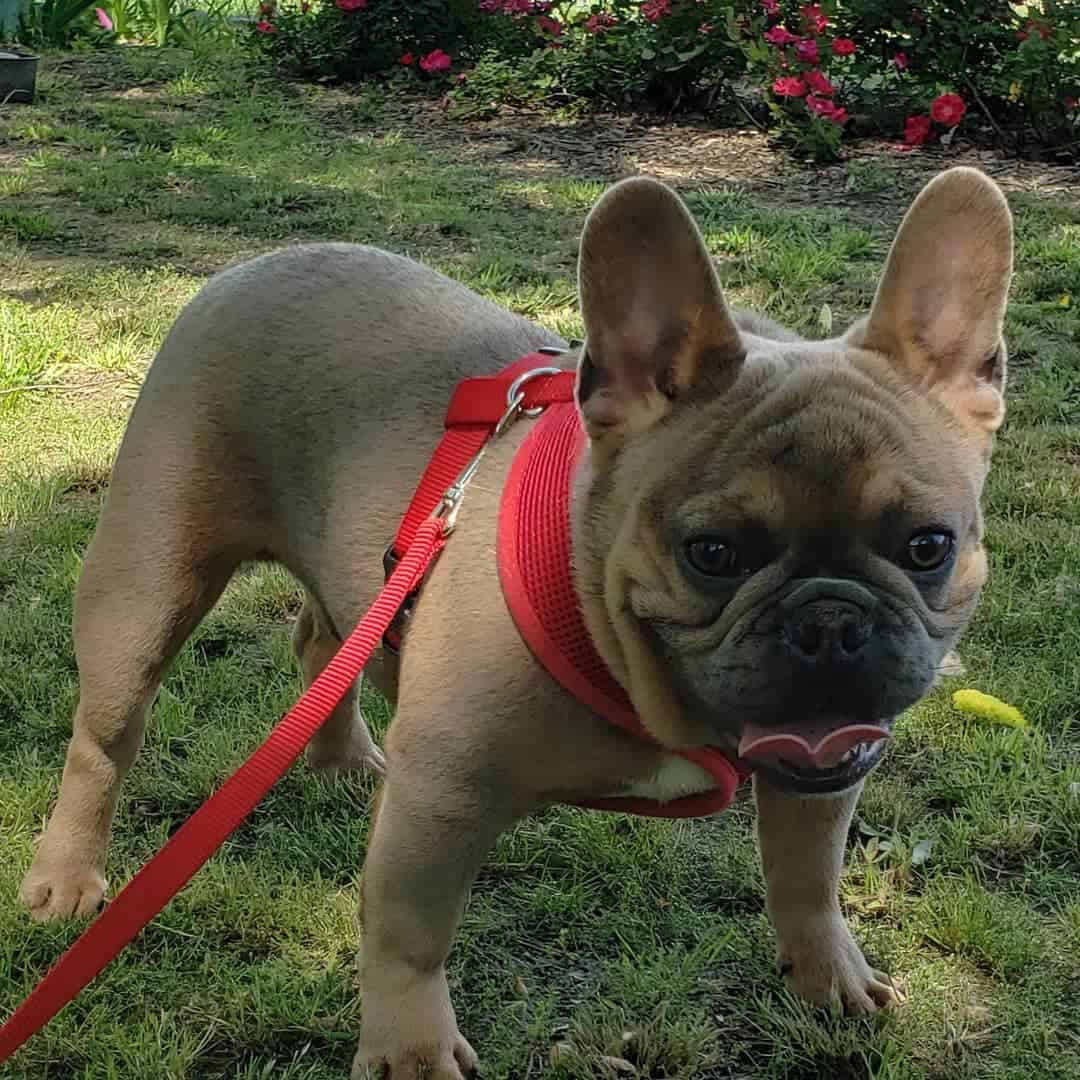
This one doesn’t need much explanation, it’s a mix of a blue French Bulldog with sable color patterns, making him appear a bit darker in some spots.
Obviously they’re rare, rarer than the two colors individually, meaning they’re also more expensive.
Blue Pied French Bulldogs
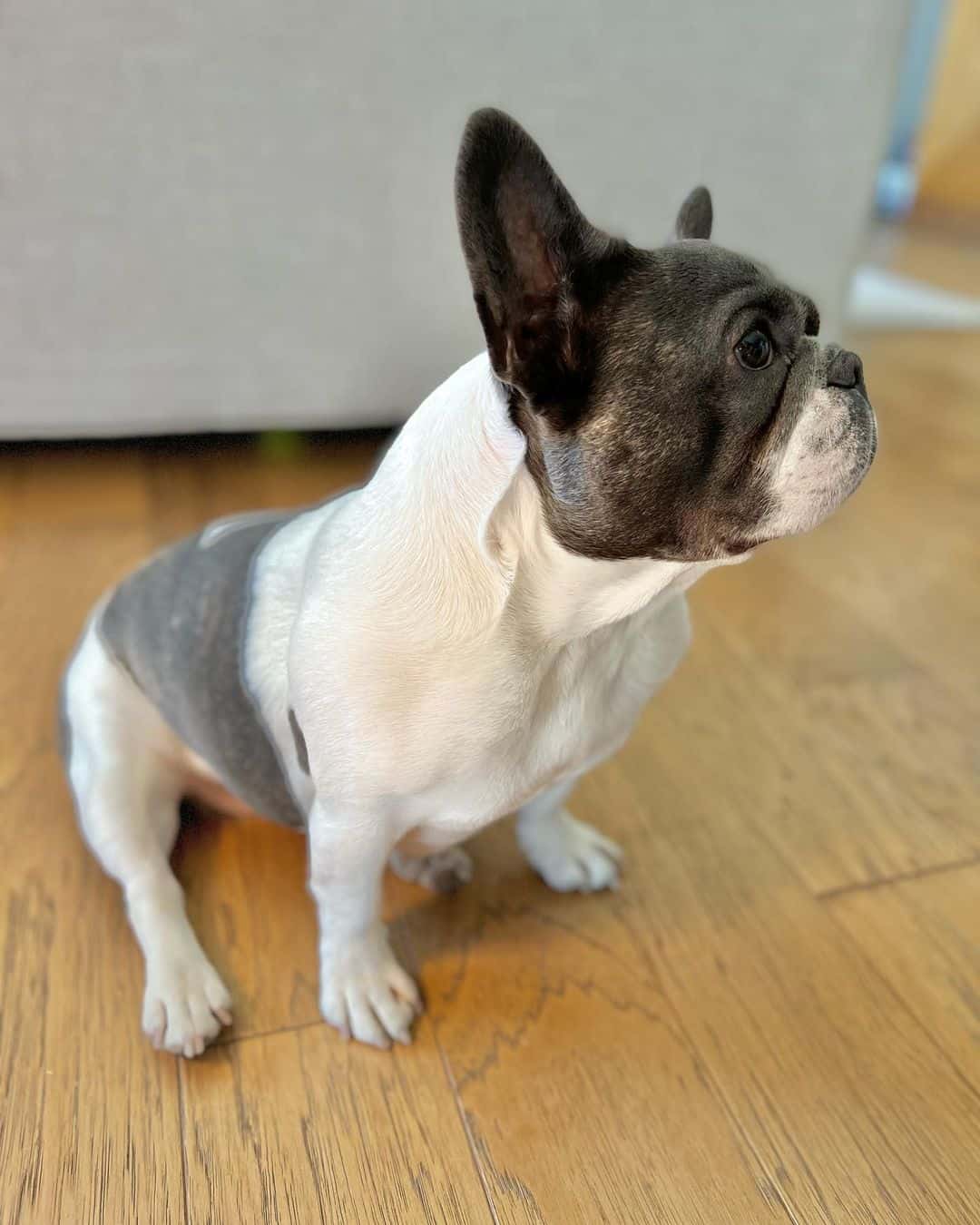
In a similar vein, this is a combination of a white French Bulldog with bluish patches on the coat itself, mostly around the eyes, ears and the back.
It’s like a rarer version of a white and black French Bulldog, one that’s considerably more expensive.
Blue Brindle French Bulldogs
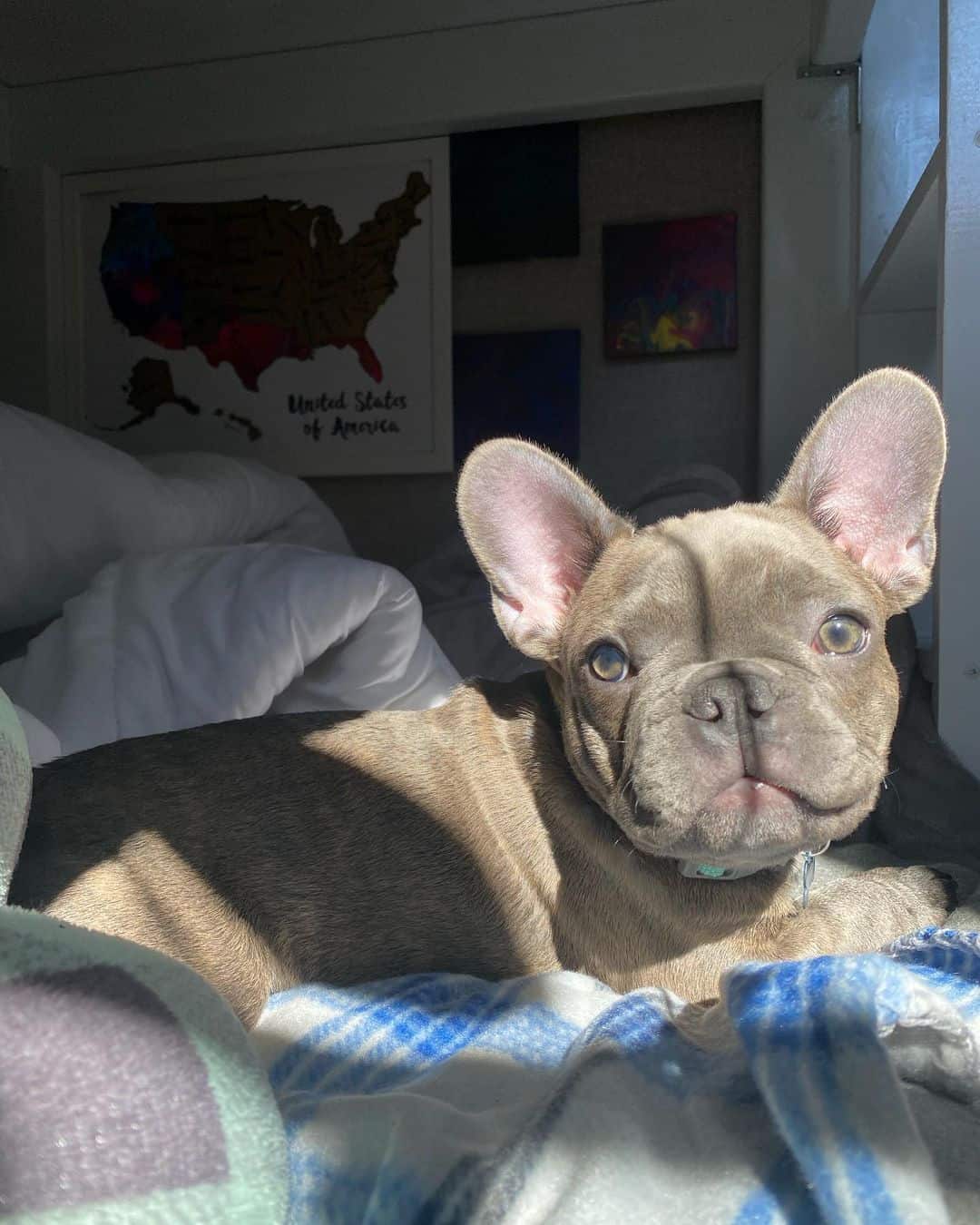
Blue brindle Frenchies are a color variant of the French Bulldog breed that predominantly have that grayish blue hue with white patches around the chest area.
And, as you may have guessed, all of these pale-ish color patterns tend to jack up a pretty high price on the market.
Blue Fawn French Bulldogs
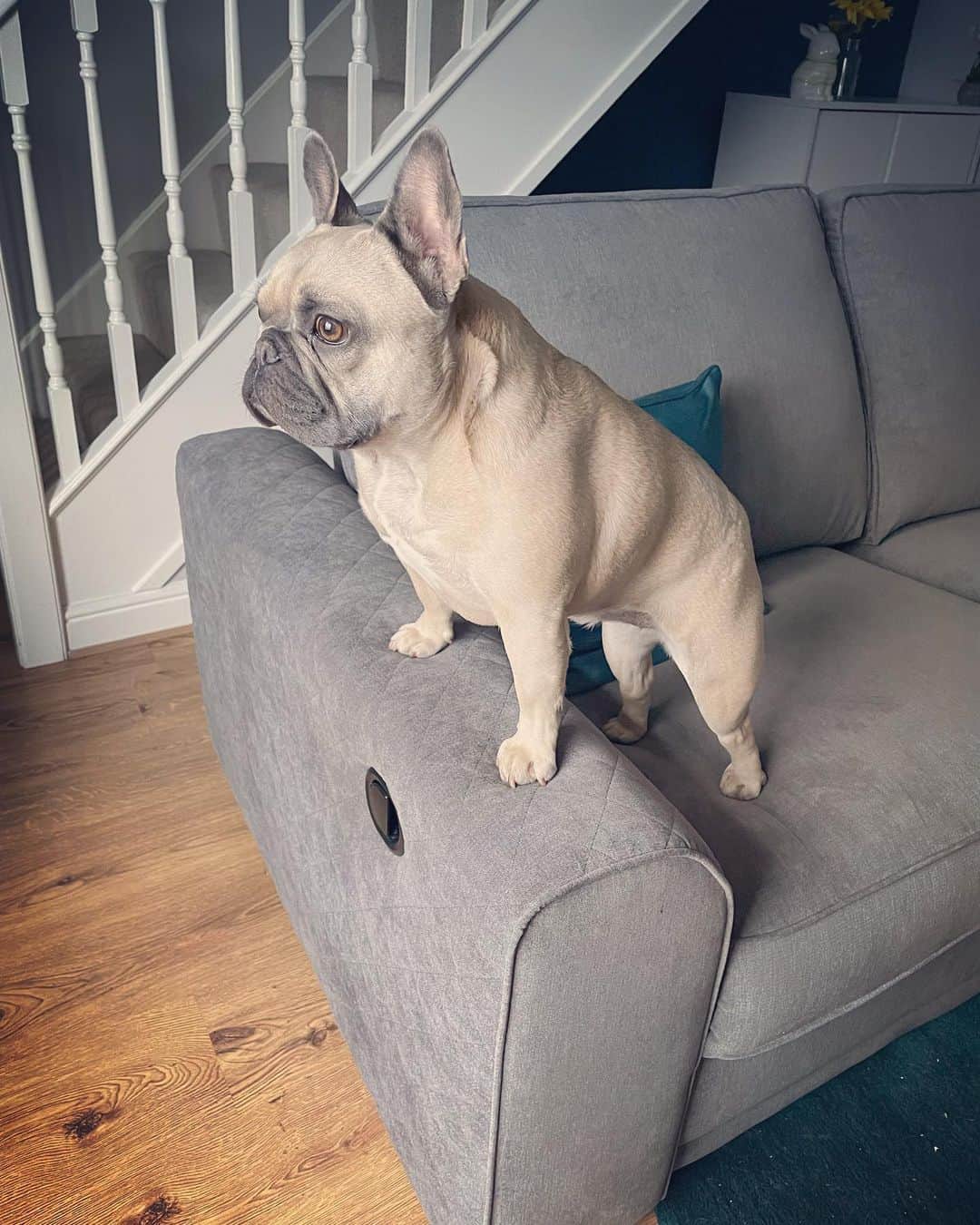
An alternate option on the fawn Frenchies where the coat is predominantly blue with a black mask.
While not as rare as some of the others, it is still a bit more expensive than some of the standard colors.
RELATED: Blue Fawn French Bulldog Color Analysis
Red Fawn French Bulldogs
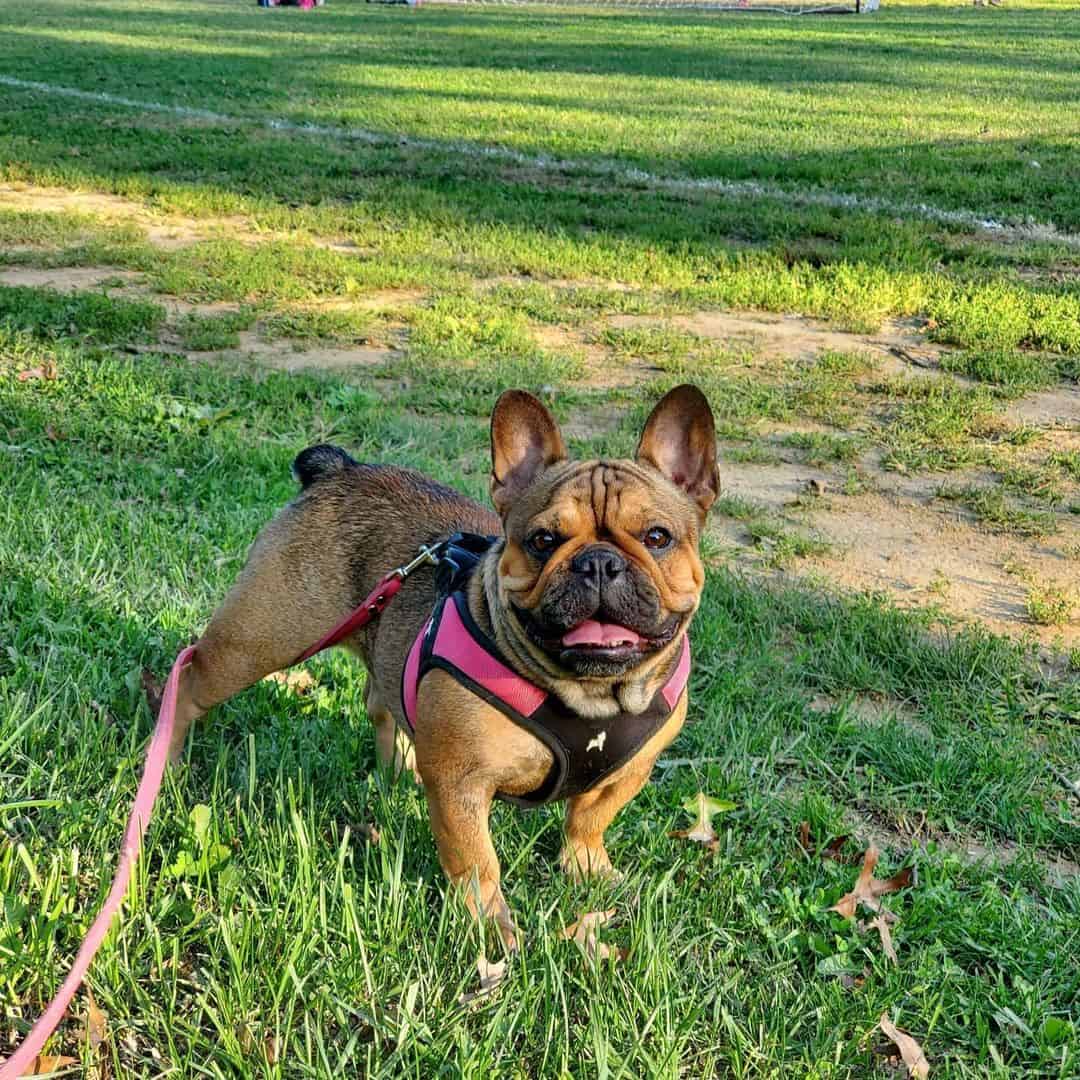
The final non-standard color, at least one of the more popular ones, is red fawn.
It’s a different take on the tan French Bulldogs that utilizes a red coat as a base and ends up with a darker hue, but that’s about it.
Though, given how it’s somewhat rarer than the others, it does end up making the dog’s price higher than normal.
What’s The Average Cost Of A Regular French Bulldog?
The average cost for one of the standard Frenchie colors goes anywhere from $1500 to $3000 on average, but can end up being a lot higher than that in specific breeders, especially ones who offer pups from a prize winning bloodline.
Though, it’s always good to keep in mind that that’s just the initial purchase price of the dog, there are still plenty of other expenses to consider when getting any pup, especially for the first year of life.
First there’s the dog food to consider, then the various dog toys and other items that are useful for training, dog gear like leashes and collars, dog crates, beds, shampoos and the like, all fall under these expenses.
Then there’s the potential medical expenses to keep in mind too that may rear their ugly head, especially with a brachycephalic breed like the French Bulldog, and even more so if you opt to go for one of the rarer colors that’s more prone to specific health issues.
Then, there’s the extra price for choosing a non-standard color if you end up doing that too which can range anywhere from an extra $500 all the way up to $5000 if not more, depending on the breeder.
What About The Tan French Bulldog?
As far as the tan Frenchie is concerned, they usually end up costing around $6000 to $8000 on average, give or take a few hundred as it depends on breeders, but it’s definitely a lot more than a standard one would run you.
Is It Worth The Price?
Personally, no. The only real difference is the color and the only thing you’re paying for here is rarity.
If you can afford it without feeling much of a dent in your expenses, then go for it. I do envy you for it, but if it makes you happy and won’t make you suffer in any way, then it can be worth every penny as you’ll make a friend for life.
FAQs
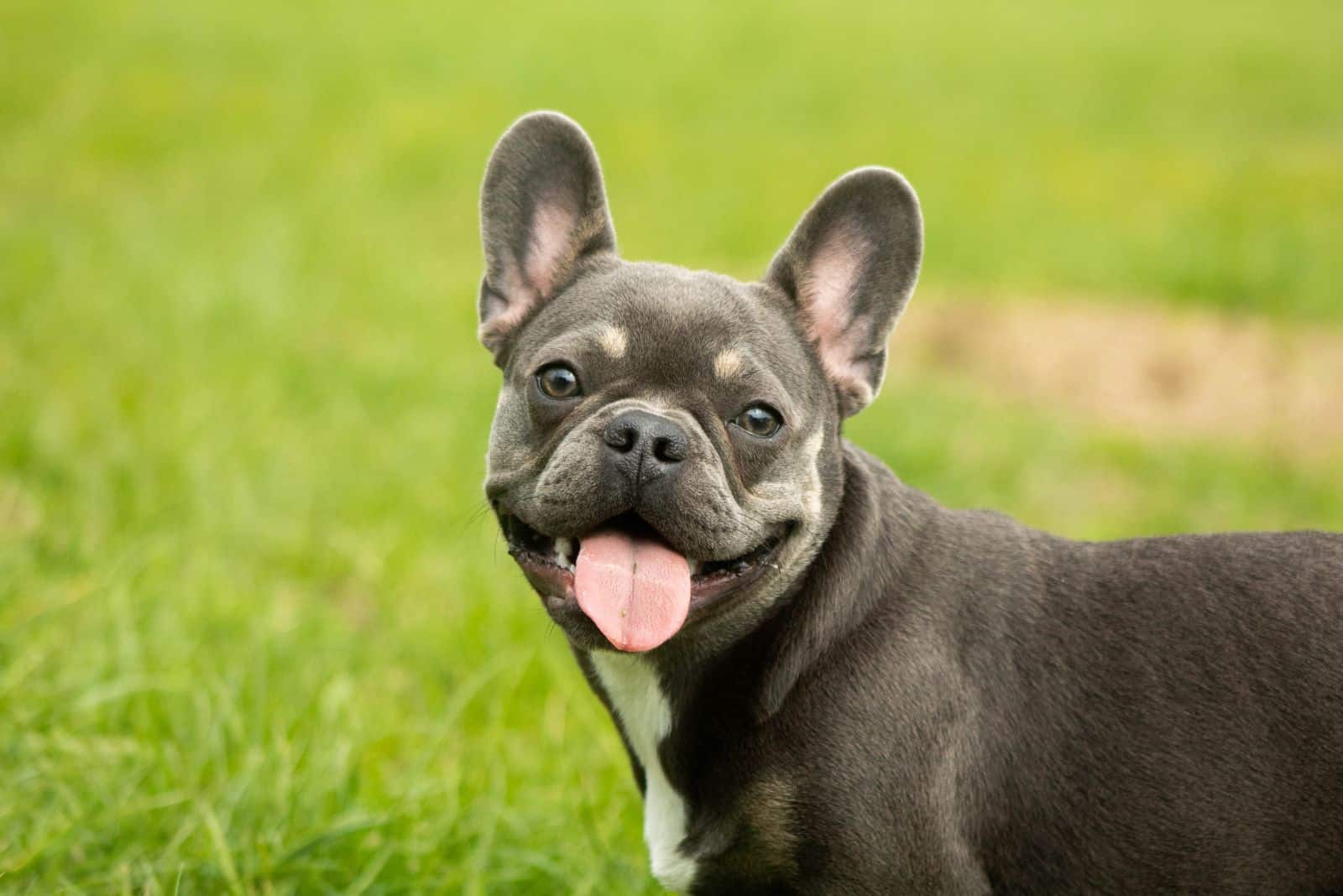
The French Bulldog is often considered to be one of the friendliest dogs out there.
They’re rarely aggressive, make for great furry friends and are pretty relaxed around strangers.
They’re great with kids and other dogs and are always eager to play, though their favorite activity is lazing about and relaxing.
Above all, they like it when things are fun and like an owner who can share in that fun with them and can take a bit of shenanigans here and there while giving the doggo the attention that he needs while providing him with adequate training.
Speaking of which, the training for this dog breed is relatively easy to manage as they’re pretty agreeable but do still require the minimum amount of firmness to be set on the right path.
If you can manage that, and have a decent amount of patience, you’ll have a really cute and funny dog as your best friend for a good while.
They’ll even start copying you at some point, so when you go and take a nap, your own pooch may end up doing the same, albeit in a funny little pose.
As far as exercise needs go, they aren’t too demanding, only about an hour of low to moderate physical exertion daily which can be accomplished through walks or through a little bit of active play.
Frenchies, as I’ve mentioned prior, are relatively prone to a number of health problems, the rarer colors even more so than the base color ones are, but even the standard ones have a good amount of health risk to worry about.
So I don’t go all day listing every single one, here are some of the more common problems:
Brachycephalic Syndrome
The first problem every French Bulldog owner should be aware of is the fact that this cute dog breed is brachycephalic which is a technical term for saying that he has a flat snout.
While this was an aesthetic choice for breeders and the many dog owners of this breed and a few others like the pug for many years, this ended up affecting the breed negatively health wise.
The obvious reason is their difficulty to breathe due to obstructed airways from their shortened muzzles.
That then leads to increased fatigue and lack of stamina in general due to improper breathing which can further lead to making the dog prone to other health complications.
And, of course, it makes them unable to take the heat as well as some of the other dogs.
There isn’t much you can really do in this case other than try to give your dog an easy life where he doesn’t have to experience the most extreme of difficulty regarding this particular issue.
Though, some breeders have advocated for trying to return the breed back to the pre snout-flattening period for ethical purposes, so hopefully that takes swing so these poor dog breeds don’t have to suffer as much.
Another relatively common condition for most dogs is bloat. Though primarily a risk in larger ones, it’s something that can happen to any dog, especially ones who don’t pace themselves while eating.
The condition essentially describes the stomach twisting in on itself after distending for one reason or another, usually due to extreme exercise or eating too quickly and too much and it retracts in a weird way.
Once it twists around itself, it ends up trapping the food, fluid or gas within the stomach which creates this slightly bloated look, but the biggest risk apart from the intestinal blockage is that the blood flow to a lot of surrounding organs also gets cut off.
This puts the dog in life threatening risk really quickly and he will require medical attention to resolve the issue.
In order to reduce the risk of this occurrence, be sure to not overwork your dog and to teach him how to pace himself while eating or drinking so this doesn’t end up happening to him.
Skin Infections
Frenchies, compared to many other dogs, seem to be more prone to various rashes and other skin infections. Whether it’s due to a poor metabolism or overall poor skin quality, it’s unclear, but it can be a real bother for them.
While nothing life threatening, it’s best if remedied early to save your dog the discomfort of having to deal with it.
Medicated shampoos can help when the problem manifests, otherwise, going for all natural dog shampoos with ingredients like honey and aloe that can keep the skin’s moisture and natural oils locked in can do a lot in helping minimize the risk of an infection sticking.
Obesity
Another condition that’s definitely avoidable, but can cause your dog a lot of issues if he ends up going overboard on his weight.
For small dog breeds like the French Bulldog, this is even harder to manage as them gaining 3-5 pounds isn’t the same as a Cane Corso gaining the same amount.
The latter can manage, the former is already going to have a lot of problems with mobility and being more prone to heart disease and other cardiovascular conditions.
The best way to help reduce the likelihood of this happening is to establish a healthy and balanced diet for your canine companion.
Separate his food into more portions if you need to to better monitor his intake and to pace him better.
Regulate the amount he eats, even if it’s the suggested amount because your dog may end up not needing as much as the average representative of his breed does.
And, of course, make sure he gets his daily exercise in to help work through those calories.
Ear Infection
The French Bulldog is a relatively vulnerable dog breed, and his ears are no exception to that rule.
They’re relatively narrow which leaves the dog more prone to all sorts of potential infections.
Make sure to look him over for any irregularities that may occur around the ears so you can act quickly before something ends up making the condition worse and get him the help that he needs to resolve the issue.
Wax build-up can be a real pain too so cleaning his ears regularly may be a necessity, though consult your vet over the best approach to that so you don’t end up hurting him on accident.
Issues Regarding The Stomach
If it wasn’t bad enough already, the French Bulldog is also prone to a lot of issues that can affect his digestive system aside from just bloat.
One of the main concerns would be allergies as they’re more likely to have at least one specific food allergy.
It pays to be mindful of what you feed him so you can discern the potential culprit in case his allergies start acting up so you can swap food accordingly.
The most common culprits tend to be grain allergens like wheat, corn, or soy, but other products can be potential allergens too.
Whatever the case, regulating his diet is the best way to help relieve the issue.
Other than that, parasites are always something to look out for, worms in particular.
While they’re a menace on their own, the poor Frenchie ends up taking it even worse than most dogs, so getting rid of them quickly should he contract any should be your #1 priority.
The most common worm parasites tend to be hookworms, tapeworms and ringworms.
It’s good practice to have him get regular deworming treatments every 2 months or so for his first year of life even if the results end up being negative as it’s a good preventative measure from the parasites causing problems during his growth period.
If they mess up with the nutrients, it can pose quite a risk for your dog and can cause abnormalities that’ll follow him for the rest of his life.
Should he end up getting a worm in his system by eating some contaminated food or otherwise, make sure to get a stool sample over to the vet.
You can either by sending it over or getting your dog to the vet directly so he can determine whether or not worms are the cause of the issue.
Pinkeye
Finally, an issue that French Bulldogs are more prone to than a number of other breeds is pinkeye or conjunctivitis.
While it’s not the deadliest issue ever, it can be really bothersome for the dog as it can temporarily interfere with his sight.
Thankfully, the condition is easily treatable through antibiotics, just make sure to keep him away from any other dogs as the condition is highly contagious and you don’t want other doggos suffering from it too.
He should be back to his old self in a week or so though, if everything goes well.
They certainly do. As most of these rare colors are signs that the dog isn’t a purebred, it often means that his immune system is even worse than it already is, leaving him more prone to a number of the diseases mentioned here.
It’s not just the color itself though, various other mutations affect it in a negative way, e.g. the ever popular mini French Bulldog, also known as the Teacup French Bulldog, whose small size comes with a large amount of health issues.
In Conclusion
As we can see, the tan French Bulldog is certainly a rare coat color for the French Bulldog, but it may not be worth pursuing due to the price and the potential health problems that come with it.
While the tan Frenchie in particular isn’t more at risk due to its color, some of its other colored friends are, making it a big risk if you consider buying one.
Speaking of which, the prices for these non-standard coat colors, even though they aren’t AKC recognized, meaning they can’t participate in dog shows, are still extremely high, jacking up the average price by several thousand dollars in some cases.
They’re considered to be collector’s items at that point and are sought after for their rarity despite the knowledge of the health problems that this makes them more prone to.
Now, whether you want one or not is entirely up to you, I won’t judge you for it either way, just know that you’ll need to be prepared to invest a lot of money into a tan Frenchie and that you’ll need to take real good care of him.
That said, I don’t doubt that you’ll end up making the right decision in the end. Until next time, pet parents.
RELATED LINKS:
- 8 Best French Bulldog Breeders In Oregon: A Safe Buy
- Pied French Bulldog: Behind The Distinct Color Pattern
- French Bulldog Growth Chart: How Big Can A Frenchie Get?
- Black French Bulldogs: Why Are They So Interesting?
- 25 French Bulldog Colors That Will Blow Your Mind
- French Bulldog Cost: Small Dog, Big Price
